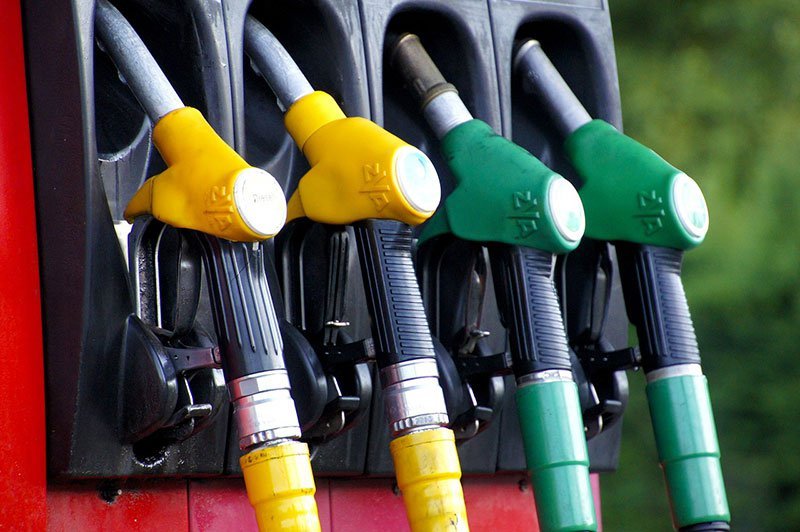
How Rising Fuel Costs Stand to Impact Logistics
As fuel prices continue to increase steadily, it is critical to examine how this can impact the logistics industry and what effect it would have on its customers. Based on historical records, it can be inferred that fuel costs have a bearing on the cost of transport. But the operating characteristics of logistics firms, such as average length of haul, average load, and capacity utilization, are key parameters that need to be considered while measuring the actual impact of an increase in fuel costs. Since road transport costs represent a small percentage of the sales revenue (~ 5% or lower), it could be extrapolated that changes to the price of fuel may not necessarily affect strategic decision making. But because fossil fuel still remains the main source of energy for transport operations, and expenditure on fuel accounts for approximately two-thirds of the operating cost of trucks, price fluctuations remain significant.
Let us look at the likely impacts of hikes in fuel costs, and what you as a customer should look for while selecting a logistics partner:
Operators would look to reduce the average time per trip
When it comes to the logistics sector, time is, quite literally, money. The three main components that impact the duration of a trip are loading time, travel time, and unloading time. While travel time is most often optimized, it is the loading and unloading time that have a potential to be reduced further. The more time a fleet spends on the road, the better it is for the operators. On an average, Indian vehicles clock between 6,000-9,000 kms per month as compared to 12,000 kms covered by those in the US. Better planning and communication between customers and Logistics companies can help increase the time spent by vehicles on the road. By maximizing utilization of resources, operators can prevent an unnecessary loss in revenue, and this is a benefit they can pass on to their customers.
Leverage the latest technology available to decrease down-time
On their part, the Logistics sector needs to minimize the time goods spend in storage facilities. Warehouse automation and robotics can contribute considerably to this endeavour. The use of technology can help to maximize resource utilization and reduce errors. This will ultimately lower the duration of each trip as well as prevent trip duplication that arises due to delivery lapses.
Logistics companies would try to improve efficiency of operations
This needs to be a multi-pronged approach, which includes better on-ground management, a more careful planning of routes, logistical restructuring, and load distribution across the network. Vehicle selection, too, has an important role to play, with larger vehicles being used for longer hauls, and older vehicles for shorter ones.The transport sector is also carefully considering the Railway Ministry’s recently launched roll-on roll-off service – using trains to transport loaded trucks through heavily congested sections of the route. Although RO-RO, as it is commonly known, has perceived advantages, since it is still in its nascent stages in India, it would be prudent for Logistics companies to employ a wait-and-watch approach.
The cost per kilometre would need to be reduced
Since it is not viable to increase freight charges commensurate to the increase in fuel costs, operators will be forced to look at other ways to reduce the costs incurred. The easiest way to achieve this is more fuel-efficient driving: logistics companies would need to train their drivers to inculcate frugal driving habits, and their fleet of vehicles would have to be better maintained. Additionally, factors that are often overlooked, such as tire pressure and carriageway density, would also need to be taken into consideration. Vehicles running on alternate fuels like ethanol as well as electric vehicles could be introduced into the vehicle mix. While this may increase the outlay for companies in the short-term, benefits over a longer period of time could be significant, and from a customer’s perspective, forward-thinking companies that take these factors into consideration will provide the most value going forward. The government could also look at offering subsidies to incentivise the adoption of such vehicles by logistics companies.
The frequency of revision in contracts related to fuel prices would need to be increased
Currently, the clause in ongoing contracts regarding the impact of diesel prices is revised once every three months. Ideally this needs to be addressed every fortnight. While this might not seem like a customer-centric approach, it is because it is being considered at a time when prices are rising. But it also stands to benefit the customers when fuel prices drop.
On the whole, while a rise in fuel prices may seem like a hindrance to the growth and profitability of the logistics sector, it being an external factor, the most logical course of action would be to find ways to offset its impact. This, in the long run, may in fact have far-reaching and considerably beneficial effects on both, the logistics industry, as well as its client base.

Nitin O Mahipal - MD of Mega group
Nitin O Mahipal, CEO and MD of Mega Group providing Transportation, 3PL and packing and moving services has earned his MBA in Logistics and Finance from the Cardiff University, UK. He expanded MEGA's services to FMCG, Retail, Pharma, Textiles, rubber and tyre MNC’s revolutionizing customer experience with digital initiatives like the Mega App. Under his leadership, MEGA's warehouse foot print grew from 50,000 to over 12 lac square feet space, PAN India Network of branches and Fleet of trucks, with transit times slashed to hours.

